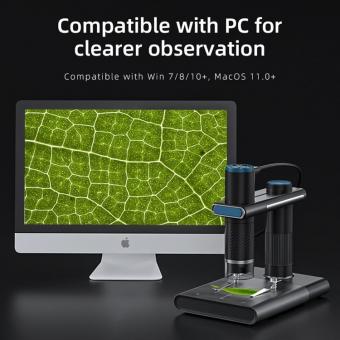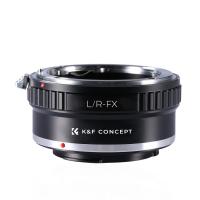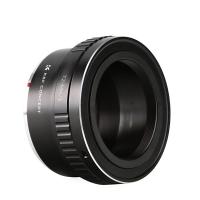Can Viruses Be Seen With A Light Microscope ?
No, viruses cannot be seen with a light microscope. They are much smaller than the wavelength of visible light, typically ranging in size from 20 to 300 nanometers. Light microscopes have a limited resolution of around 200 nanometers, which means they cannot distinguish individual viruses. To visualize viruses, electron microscopes are used, which have much higher resolution and can magnify the sample up to millions of times.
1、 Limitations of light microscopy for visualizing viruses
Limitations of light microscopy for visualizing viruses:
Light microscopy, also known as optical microscopy, is a widely used technique for visualizing biological samples. However, when it comes to visualizing viruses, light microscopy has several limitations.
Firstly, the size of viruses is significantly smaller than the resolution limit of light microscopy. Most viruses range in size from 20 to 300 nanometers, whereas the resolution limit of light microscopy is around 200 nanometers. This means that viruses are often too small to be directly observed using a light microscope.
Secondly, viruses lack the necessary contrast for visualization under a light microscope. Unlike cells, which have distinct structures and organelles that can be stained or labeled for better visibility, viruses are composed of a protein coat and genetic material, making them difficult to distinguish from the background noise.
Additionally, viruses are often present in low concentrations within a sample, further complicating their visualization using light microscopy. This is particularly true for viral infections in living organisms, where the viral load can be quite low.
However, recent advancements in light microscopy techniques have allowed for some visualization of viruses. For example, fluorescence microscopy can be used to label specific viral components, such as the protein coat, enabling their detection. Additionally, super-resolution microscopy techniques, such as stimulated emission depletion (STED) microscopy and structured illumination microscopy (SIM), have pushed the resolution limit of light microscopy, allowing for better visualization of smaller structures, including some viruses.
In conclusion, while light microscopy has its limitations in visualizing viruses due to their small size, lack of contrast, and low concentrations, recent advancements in microscopy techniques have improved our ability to detect and visualize certain viruses. However, electron microscopy remains the gold standard for directly visualizing viruses due to its higher resolution and contrast capabilities.

2、 Viral size and resolution of light microscopy
Yes, viruses can be seen with a light microscope, although their small size poses challenges in terms of resolution. Light microscopy, also known as optical microscopy, uses visible light to illuminate and magnify specimens. However, the resolution of light microscopy is limited by the wavelength of visible light, which is around 400-700 nanometers. This means that objects smaller than this limit cannot be resolved clearly.
Viruses are incredibly small, typically ranging in size from 20 to 300 nanometers. Some viruses, such as the influenza virus, are on the larger end of this scale and can be visualized using a light microscope. However, many viruses are smaller and require more advanced techniques, such as electron microscopy, to be observed.
In recent years, advancements in light microscopy techniques have allowed for improved resolution and visualization of smaller structures. Super-resolution microscopy techniques, such as stimulated emission depletion (STED) microscopy and structured illumination microscopy (SIM), have pushed the limits of resolution beyond the diffraction limit of light. These techniques have enabled scientists to visualize structures as small as a few nanometers, including some viruses.
However, it is important to note that even with these advancements, there are still limitations to what can be observed using light microscopy. Some viruses, particularly those with sizes close to or below the diffraction limit, may still be challenging to visualize with sufficient detail using light microscopy alone. In such cases, electron microscopy or other specialized techniques may be necessary to obtain higher resolution images of viruses.

3、 Techniques enhancing virus visibility under light microscopy
Yes, viruses can be seen with a light microscope, although they are generally smaller than the resolution limit of a light microscope. The resolution limit of a light microscope is around 200-300 nanometers, while most viruses range in size from 20-300 nanometers. Therefore, without any additional techniques, it is challenging to directly visualize viruses using a light microscope.
However, there are techniques that can enhance virus visibility under light microscopy. One such technique is immunofluorescence staining, where specific antibodies are used to bind to viral proteins, which are then visualized using fluorescent dyes. This allows for the detection and localization of viruses within infected cells. Another technique is electron microscopy, which uses a beam of electrons instead of light to visualize viruses. Electron microscopy has a much higher resolution than light microscopy and can directly visualize individual viruses.
In recent years, advancements in super-resolution microscopy have allowed for the visualization of viruses using light microscopy. Techniques such as stimulated emission depletion (STED) microscopy and structured illumination microscopy (SIM) can achieve resolutions below the diffraction limit of light, enabling the visualization of viruses. These techniques use various methods to overcome the diffraction limit, such as using fluorescent dyes that can be switched on and off or using patterned illumination to extract high-resolution information.
Overall, while viruses are generally smaller than the resolution limit of a light microscope, various techniques, including immunofluorescence staining, electron microscopy, and super-resolution microscopy, can enhance virus visibility under light microscopy. These techniques have greatly contributed to our understanding of viral structure and behavior.

4、 Examples of viruses visible under light microscopy
No, viruses cannot be seen with a light microscope. Light microscopes have a limited resolution, typically around 200 nanometers, which is not sufficient to visualize viruses. Viruses are much smaller than the wavelength of visible light, ranging in size from about 20 to 300 nanometers. Therefore, they require more powerful microscopes, such as electron microscopes, to be observed.
Electron microscopes use a beam of electrons instead of light to visualize objects. This allows for much higher resolution imaging, enabling scientists to see viruses and other subcellular structures in detail. With electron microscopy, viruses can be visualized and studied, providing valuable insights into their structure and behavior.
However, it is important to note that recent advancements in microscopy techniques have allowed for the visualization of some larger viruses using light microscopy. For example, the giant mimivirus, which is about 750 nanometers in size, has been observed using fluorescence microscopy. This technique involves labeling the virus with fluorescent markers, which can then be detected using a light microscope. While this is an exception, it demonstrates that there may be some viruses that can be seen under light microscopy under specific conditions.
In conclusion, while most viruses cannot be seen with a light microscope due to their small size, there are some exceptions where larger viruses can be visualized using fluorescence microscopy. However, for most viruses, electron microscopy remains the primary tool for their observation and study.





























